This time, we’re introducing Kichijitsu Goyomi—a moving, mature manga that lets you learn real-world business Japanese through the heartfelt stories of weddings, clients, and one woman’s quiet determination to create “the perfect day.
Work Information
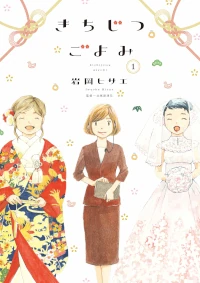
Kichijitsu goyomi (きちじつごよみ)
Author: Iwaoka Hisae
Publisher: Shodensha
Amount of text: moderate
Challenge level: ★★
Latest volume : Vol.2(Nov.2024 / Ongoing)
Story overview
Meet Koyomi Inagawa, a freelance wedding planner known for her outstanding skills and warm personality. Despite not working for a company, she’s highly respected in the wedding industry. Koyomi has a special ability to embrace the wishes of each bride and groom like a ray of sunshine—and the more impossible the request, the more motivated she becomes. While maintaining a complicated relationship with her former colleague and current rival Shinoyama from her big-name hotel days, she throws herself into creating “the perfect day” for every couple, one wedding at a time.
The Appeal of This Manga
Koyomi is a thoughtful, hardworking wedding planner who faces a wide range of clients—each with their own challenges—and works tirelessly to deliver the best possible wedding experience.
Because weddings are such important life events, they often bring out intense emotions from everyone involved. Koyomi’s unwavering commitment to staying close to her clients’ wishes is deeply moving.
Supporting characters, like her rival Shinoyama, are also distinctive and charming in their own right. The series as a whole is heartwarming and aimed at adult readers—leaving you with a sense of kindness and fulfillment after each chapter.

Why this manga is suitable for learning Japanese
This manga is not only entertaining but also highly recommended for Japanese learners for several reasons.
Gentle, Flawless Business Japanese
As a professional wedding planner, Koyomi consistently uses polished, textbook-perfect keigo (formal Japanese). Her character is also portrayed as kind and empathetic, so her speech style is gentle and warm—an ideal model for learners, especially those interested in service industry communication.
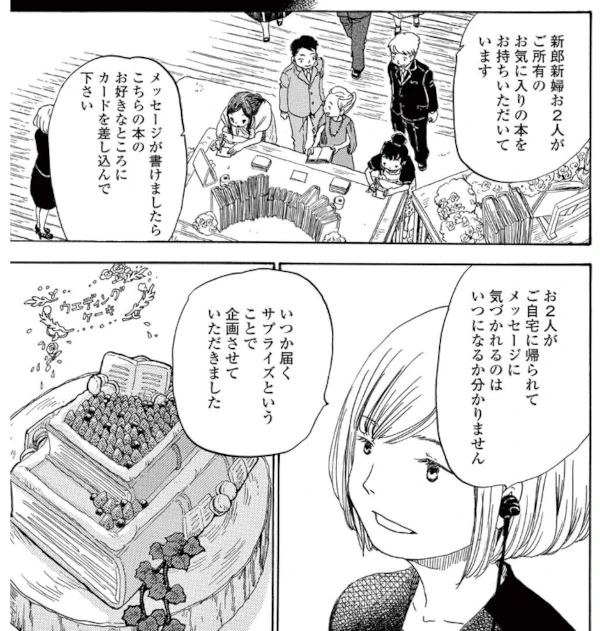
Frequent Switching Between Formal and Casual Speech
Characters like Koyomi, Shinoyama, and their clients naturally shift between polite and casual speech depending on who they’re talking to. This allows readers to observe subtle changes in tone based on social context, setting, and relationship. You’ll encounter a wide range of keigo—from service staff to clients—making the manga a valuable resource for learning how Japanese is used appropriately in different real-life situations.
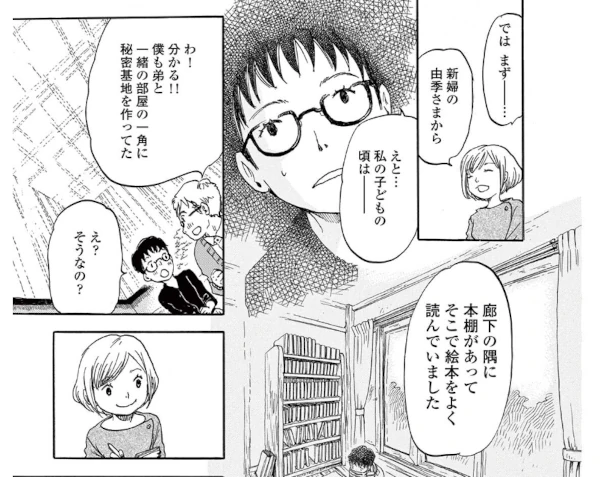
Phrase Spotlight
A Once-in-a-Lifetime Day”: Understanding Japanese Wedding Culture結婚式
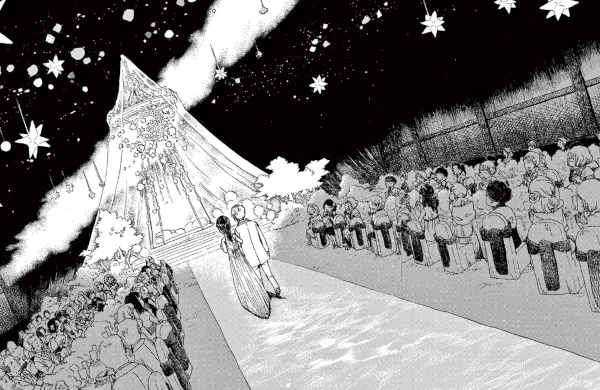
In Japan, weddings are more than just ceremonies—they’re carefully curated events filled with emotional, cultural, and social meaning. From meticulous planning to high expectations, especially for brides, these “once-in-a-lifetime” days reveal much about Japanese values and communication. Let’s explore how weddings reflect both beauty and pressure in Japanese life and language.
A Day When the Bride Becomes the Star
In Japan, weddings are often viewed—especially for women—as the ultimate day of personal celebration. Many brides dream of this event as the one time in life when they can truly take center stage. This “princess moment” reflects a deep-rooted cultural ideal, where the bride gets to be the most beautiful, celebrated person in the room—like the heroine of her own fairy tale.
Because of this, brides (and often their families) may have very strong preferences regarding everything from dress styles to flower arrangements, meal courses, guest seating, and even background music. It’s not just a ceremony—it’s a deeply personal statement.
One unique feature in Japanese weddings is the number of oironaoshi, or costume changes. It’s common for brides to wear two or even three different outfits throughout the celebration—typically starting with a traditional kimono or white wedding gown and later switching to a colorful dress or even another formal ensemble. These changes symbolize different aspects of the event and offer the bride multiple chances to shine throughout the day.
A Big Industry with High Emotional Stakes
Before the COVID-19 pandemic, Japan’s wedding industry was a major economic force. Dedicated wedding venues, luxury hotels, dress rental companies, florists, and even wedding-themed photo studios created a highly specialized, high-stakes market.
Even today, despite a gradual shift toward smaller and more flexible ceremonies, the planning process remains intensive. Countless decisions must be made before the big day, and last-minute changes are extremely common. From family expectations to sudden weather problems, planners are expected to adjust on the fly—gracefully.
High Cost, High Expectations
Japanese weddings are expensive. A traditional ceremony and reception can easily cost the equivalent of tens of thousands of dollars. Much of this cost goes into making the event feel luxurious, seamless, and memorable—often with detailed, hand-crafted touches that reflect the couple’s story or preferences.
But with high cost comes high pressure. Family opinions, tight deadlines, and emotional buildup mean that misunderstandings and stress are not uncommon. It’s no surprise that weddings are often a setting for drama—not only in fiction, but in real life.
The Wedding Planner: A Behind-the-Scenes Hero
Given the complexity of planning, the role of the wedding planner in Japan is especially demanding. Far beyond simple scheduling, planners must coordinate vendors, communicate with nervous couples, resolve last-minute emergencies, and keep everything on track—all with a smile.
It’s a high-stress job that demands emotional intelligence, customer service skills, and near-military levels of organization. In fiction and in real life, these professionals often go unrecognized, but they’re the ones who truly make “the perfect day” possible.
Why It Matters for Japanese Learners
Understanding Japanese wedding culture provides more than just cultural trivia—it gives language learners insight into how emotion, etiquette, and service play out in Japanese society. From polite phrases used in formal consultations to the delicate ways planners navigate emotional conversations, weddings are full of real-world Japanese communication.
Whether you’re reading a manga like Kichijitsu Goyomi or attending a ceremony yourself, knowing how weddings work in Japan helps you better understand not just the language, but the values behind it.
A Little Warning
Feeling stressed at work? This might hit too close to home.
Because wedding planners often face demanding or unreasonable clients, some scenes portray frustrating or exhausting situations. If you’re currently dealing with similar stress in your job, reading this manga might not be the most relaxing experience.
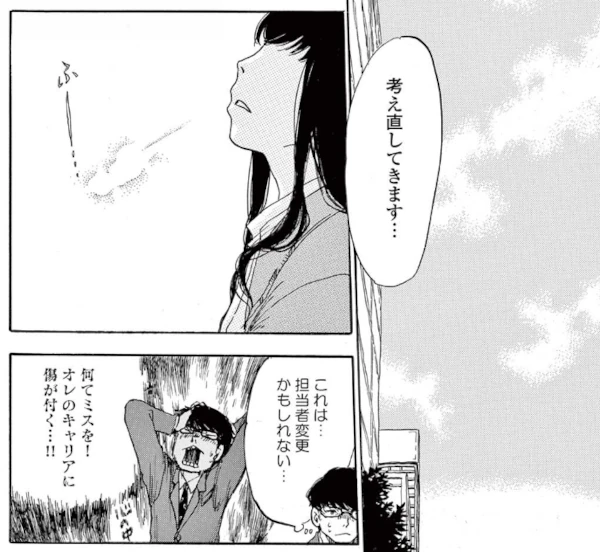
Work Information

Kichijitsu goyomi (きちじつごよみ)
Author: Iwaoka Hisae
Publisher: Shodensha
Amount of text: moderate
Challenge level: ★★
Latest volume : Vol.2(Nov.2024 / Ongoing)
Here’s a safe and convenient way to purchase Japanese manga.
This Blog’s ConceptIn this blog, we are introducing manga that are not only highly captivating but also ideal for Japanese language learners. Studying Japanese through manga is both fun and effective. Manga allows you to understand the subtleties of keigo (honorifics), teineigo (polite speech), and casual conversation in Japanese. We hope you find works that match your interests and use them to enhance your Japanese learning journey.